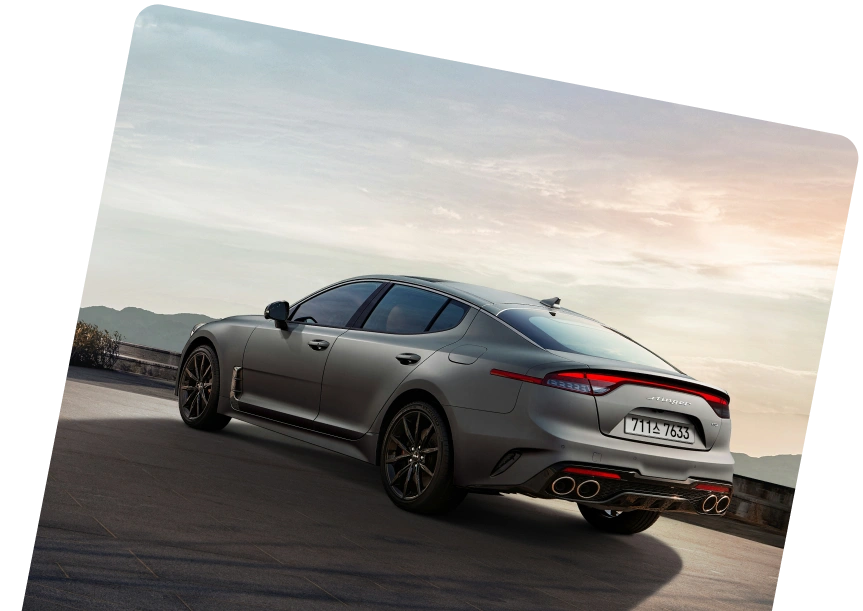If you’re in the market for a luxurious SUV that delivers on comfort, space, and modern tech, you’ve probably considered the BMW X3 vs. X5. Both of these models are incredibly popular, and for good reason — they offer a fantastic blend of high-end features and practicality.
And here’s a little tip: you can find great deals on used BMWs, so you don’t have to shell out the full price to enjoy what they have to offer.
So, whether you’re eyeing the compact yet spacious BMW X3 or the larger BMW X5, there’s a BMW SUV that’s right for you. Let’s take a closer look.
You can also read our article - 12 Best used BMW car models you must consider
Performance
Let’s start with the engine options in the BMW X3 vs. X5. The BMW X3’s base 2.0-litre petrol engine delivers 184hp and reaches 0-62mph in 8.4 seconds. For more power, the M40i features a 3.0-litre straight-six engine with 360hp, speeding from 0-62mph in just 4.9 seconds.

BMW X3
If you’re really after high performance, the BMW X3 M Competition steps it up with 510hp from its 3.0-litre engine, hitting 0-62mph in 3.8 seconds — almost matching BMW’s top sports cars. On the diesel front, the xDrive20d offers 190hp and good fuel efficiency, while the xDrive30d, with its 286hp, provides a smoother and quicker drive.
The plug-in hybrid xDrive30e combines a petrol engine with an electric motor, producing a total of 292hp and offering a 0-62mph time of 6.1 seconds. And for those ready to go all-electric, the iX3 offers a 286hp motor and up to 285 miles of range.

BMW X5
The BMW X5’s standout engine is the 4.4-litre twin-turbo V8 M60i, delivering 530hp and a 0-62mph time of just 4.3 seconds. It’s the fastest BMW X5. For those who prefer diesel, the xDrive30d provides 298hp from its 3.0-litre engine. For even more power, the xDrive40d ups the ante to 352hp.
The BMW X5 50e plug-in hybrid combines a robust 489hp with a sizeable 25.7kWh battery. It offers impressive acceleration — 0-62mph in 4.8 seconds — and BMW claims it can cover up to 66 miles on a full charge.
Specs
BMW X3 | BMW X5 | |
Base engine | 2.0-litre petrol, 184hp | 3.0-litre diesel, 298hp |
Max power | Up to 510hp (3.0-litre straight-six in BMW X3 M Competition) | Up to 530hp (4.4-litre twin-turbo V8 in M60i) |
0-60 mph | 3.8-8.4 seconds | 4.3-6.1 seconds |
Drivetrain | All-wheel drive | All-wheel drive |
Fuel economy | 24.4-26.2 mpg on average | 20.8-42.2 mpg on average |
Wheel size | 19” x 7.5” | 20” x 9” |
Road tax cost | £600 | £590-£600 |
Insurance group | 28-50 | 43-50 |
Price
For a 2016 BMW X3, you can expect to pay around £19,500. If you’re interested in a 2020 model or newer, prices usually start at over £30,000.
To compare BMW X3 and X5, a 2016 BMW X5 will typically cost about £21,400. For a 2020 or newer X5, you’re looking at prices starting at over £40,000.
Styling

BMW X3 on the left, BMW X5 on the right
The BMW X5 is clearly larger than the BMW X3, so you can easily spot the difference from afar. The BMW X3 got an update in 2022, so it looks sharp and current. The X5 stuck with its 2019 design, so the X3 has a bit of an edge in the style department.
The BMW X3 has a sleek, sophisticated vibe with its sculpted side profile and the prominent BMW kidney grille. It strikes a nice balance — modern and stylish without being too flashy. It’s the ideal compact family SUV that’s both practical and chic.
On the other hand, the BMW X5 has a real presence on the road. It’s bigger and more rugged with its bold, boxy design, aggressive air vents, and sharp edges. It looks every bit the sporty SUV, especially if you opt for the M model.
Driving
The BMW X3 really shines when it comes to handling. The xDrive all-wheel drive system ensures fantastic grip and makes sharp turns and winding roads feel effortless. Interestingly, you have an automatic function that adjusts the ride based on how you’re driving and data from the sat-nav.
With optional adaptive dampers, you can switch between Comfort and Sport modes. Comfort mode provides a smooth, refined ride, and Sport mode tightens up the suspension for better control and less body roll. If you go for the air suspension option, you’ll get an even smoother ride.
The BMW X5, meanwhile, takes a different approach. Even the base diesel model shows that it has plenty of power. The xDrive system and optional rear-wheel steering help make this large SUV surprisingly nimble. It doesn’t feel as big and bulky as you might expect, which is a big plus. While the hybrid 50e model does feel a bit heavier, it still handles with impressive grace for its size.
For those who want the ultimate driving experience, the BMW X5 M takes things up a notch with its adaptive suspension system. Neither BMW X3 vs. X5 will have the agility of a saloon or estate, but they also don’t feel as big and clunky as you might expect.
Interior

BMW X3
Inside both the BMW X3 and X5, you’ll find a touch of luxury with soft leather seats, smooth brushed metals, and elegant wood trims. The BMW X3 offers a high-end feel with quality materials and a stylish design that feels both refined and comfortable.

BMW X5
The BMW X5, however, ups the ante. With its higher price tag, it comes packed with more standard features and optional premium options. Think panoramic sunroof with a starlight mode and a top-of-the-line Bowers & Wilkins sound system. The overall vibe of the BMW X5 is even more opulent, and it is designed to make you feel special.
Technology
There isn’t much competition between the BMW X3 vs. X5 in this category. The two cars bring a high-end tech experience that feels just right. Up front, there’s a 12.3-inch touchscreen infotainment system that takes centre stage, with neatly arranged air vents below and the drive mode selector just underneath.
Apple CarPlay and Android Auto are standard, as are a 12.3-inch digital driver’s display, BMW’s easy-to-use iDrive system, Bluetooth, and sat-nav. It’s got everything you need, all with that sleek BMW style.
Size
The BMW X3 has a more compact and sportier vibe. Inside, it feels cosy and focused on the driver, which is perfect for those who enjoy a more agile and efficient ride.
The BMW X5 is bigger and makes a stronger impression on the road. The larger size of the X5 translates into a roomier and more comfortable interior, with ample headroom and an elevated driving position.
Boot space and practicality
The BMW X3 is a five-seater, five-door SUV. If you need more room, the BMW X5 offers the option of a seven-seat configuration. The third-row seats are roomy enough for kids but can feel a bit tight for adults, although they’re adjustable, so you can slide them forward or back as needed.
The BMW X5 gives you loads more luggage capacity, with a 650-litre boot compared to the BMW X3’s 450 litres. For a family of five heading off on a two-week holiday, the X5 is the obvious choice. There’s plenty of room for all your luggage and more, and with a split tailgate, packing and unpacking are very easy.
Both models have multiway adjustable front seats, and the ISOFIX points for child seats are hidden under flip-up covers to keep them out of the way when not in use. The rear seats don’t miss out on the luxury either — passengers back there are treated to the same first-class comfort. The rear doors open wide.
Overall, the BMW X5 provides more cabin space with extra legroom and headroom, which is great for longer trips. The BMW X3, on the other hand, really makes the most of its space with plenty of storage options.
Safety and reliability
BMW is known for its commitment to safety, and the BMW X3 and BMW X5 are no exceptions. Both SUVs come loaded with safety features and driver assists, many of which are standard.
Both the BMW X3 and X5 received a top-notch five-star rating in their latest Euro NCAP safety tests, where they excelled in both adult and child occupancy categories.
On the reliability front, these SUVs come highly recommended by Consumer Reports and consistently rank well in their class. Plus, BMW backs them with a three-year unlimited mileage warranty.
Running costs
The BMW X3, being a premium SUV, isn’t cheap to run. The plug-in hybrid xDrive30e offers the highest fuel economy, with official figures claiming up to 134.5mpg. Realistically, it can manage about 20 miles in EV mode at motorway speeds.
BMW’s servicing schedule can seem complicated, but the basics are straightforward: expect regular oil changes every 10,000 miles, brake services at 30,000, and a transmission fluid change around 60,000 miles. BMW’s Service Inclusive plan covers four years of servicing, with costs starting at around £1,000.
For the BMW X5, running costs are higher, especially with the M60i model, where even careful driving only gets you mid-20s mpg. The X5, like the BMW X3, has a condition-based service system, meaning the car will let you know when it needs maintenance. So, the score between BMW X3 vs. X5 here is mostly equal.
Dimensions
The BMW X5 is noticeably larger than the BMW X3 across all dimensions. Specifically, the X5 is 227 mm longer, 113 mm wider, and 89 mm taller than the BMW X3. This increase in size makes the X5 more spacious and gives it a more commanding presence on the road.
BMW X3
- Length: 4,708 mm
- Width: 1,891 mm
- Height: 1,676 mm
BMW X5
- Length: 4,935 mm
- Width: 2,004 mm
- Height: 1,765 mm
Who is the BMW X3 for?
The BMW X3 is perfect for people who want a stylish but practical SUV that’s a bit smaller and easier to handle. If you live in the city and need something that fits well into tight parking spaces, the X3’s size makes it a smart choice. It’s also a great fit for small families who need space for kids and everyday gear without going overboard.
For those who lead an active lifestyle, the BMW X3 offers enough room for sports equipment and gear. Plus, if you’re looking for a taste of luxury without the hefty price tag of larger SUVs, the X3 is a more affordable option that still feels upscale.
Who is the BMW X5 for?
If you have a growing family, the BMW X5’s spacious interior and available third-row seating can comfortably accommodate everyone and their things.
Another great scenario for this car is if you’re into adventure and enjoy hitting the trails or taking long road trips. It has a solid build and advanced features that handle different terrains comfortably.
You should also consider the BMW X5 if you spend a lot of time driving. The reason for that is, again, exceptional comfort and solid performance. Here, long journeys are smoother and more enjoyable than in the BMW X3.
Final words: BMW X3 vs. X5? Your best option
If you’re still deciding between the BMW X3 vs. X5, here’s a quick rundown to help you choose. The BMW X3 is a great, more affordable pick for those who need a stylish and comfy SUV for city life.
If you’re after something a bit more rugged and spacious, especially if you spend a lot of time on country roads or need extra seats, the BMW X5 is a fantastic choice. It handles long drives with ease and offers the option of a seven-seat configuration for larger families. Both are excellent SUVs, so think about your needs and lifestyle to find the best fit for you.







